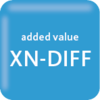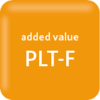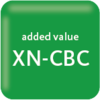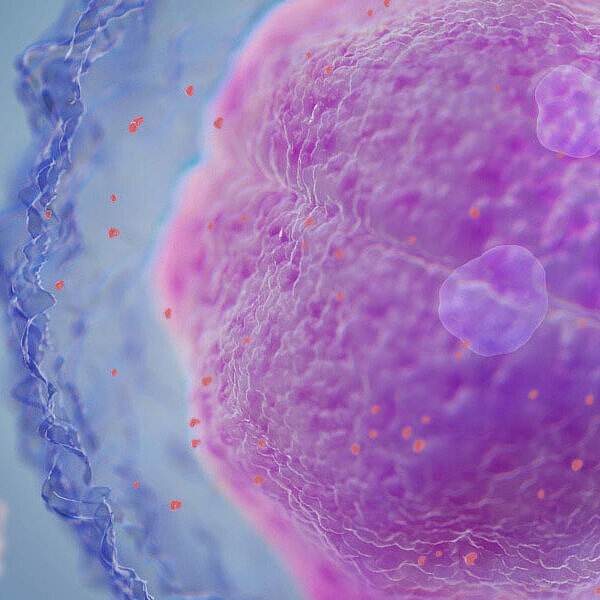XN Clinical Values
XN White blood cell differential, or XN-DIFF
The XN-Series’ DIFF count includes immature granulocytes (IG) and detects WBC abnormalities with great sensitivity. The XN delivers this high sensitivity thanks to the special shape-recognition of the sub-population clusters.
Samples with a low white blood cell concentration can be re-measured automatically in the special “low WBC mode”. This produces reliable results for all your parameters, including the differential, through an extended counting sequence. If only 20μL of blood are available, the additional pre-diluted mode means you can receive full differential results from capillary samples too.
The sensitivity of the XN-DIFF is particularly useful for detecting inflammations or infections. It also helps you monitor therapies – elevated white blood cell counts going down can show therapies are working.

XN Reticulocytes, or RET
The reticulocyte count using our proprietary fluorescence flow cytometry methodology is recognised for its accuracy around the world. In fact, it has been used in doping control for high profile events like the Tour de France since 2006.
Critically, you can also use the Sysmex RET count to identify what is really going on in clinical conditions like anaemia. Anaemia is a symptom of various clinical disorders yet often underestimated as a functional disorder of red blood cells. Using the XN, you can analyse the combined information of reticulocyte parameters – both related to quality and quantity – and so deliver the whole picture. You also have significantly faster control during iron and/or erythropoietin therapy. And most importantly, patients have a greater chance of recovery.
Alongside the pure reticulocyte count, the XN-Series RET application provides reticulocyte fractions (IRF, LFR, MFR, HFR) that reflect maturity stages and therefore erythropoietic activity, and additional information on the quality of newly formed red blood cells by reporting the degree of reticulocyte haemoglobinisation (RET-He).
Additionally, RET provides information on hypo- and hyperchromic red blood cells and fragmentocytes. It automatically calculates the reticulocyte production index (RPI).

XN Fluorescence platelets, or PLT-F
If faced with the decision of administering a platelet concentrate, the PLT-F count is more reliable than routine analysis. In fact, the XN’s dedicated fluorescence-optical analysis is comparable to the reference method ‒ even with low cell concentrations.
This matters. It matters because the immature platelet fraction, for example, indicates whether the cause of thrombocytopenia is in the bone marrow or peripheral blood. And these clearly need different treatments. Once you start thrombocytopenia treatment, it’s now also easier to monitor. Our PLT-F method offers a five-fold counting volume for PLT compared to the routine measurement.
You can decrease your TAT since there is no further need for additional platelet enumeration either by platelet immunoflow cytometry or chamber counting. And immature platelet counts are delivered by a fast and fully automated method, with no interference by fragmented red cells or broken white blood cells.

XN Body fluids, or XN-BF
You can select an automated body fluid mode as an option, dedicated to analysing cerebrospinal fluid (CSF), synovial, and serous (e.g. pleural, CAPD or ascites) fluids. Anyone who has analysed body fluids knows the sensitivity of the process. We have tried to address all the critical aspects.
Without sample pre-treatment, a special automatically activated counting sequence provides a precise total count of nucleated cells (TNC). It works even in the lowest counting ranges, such as applicable for CSF. To enhance accuracy further and help deliver better treatments, the XN has a three-fold counting volume compared to a standard counting chamber.
Measuring CSF can quickly indicate bacterial meningitis from the white blood cell count (WBC-BF) plus differentiation into polymorphonuclear and mononuclear cells.

XN White precursor cells, or WPC
Sysmex is one of few to offer a dedicated channel for white precursor cells. You can therefore offer high specificity in this specialised area. It is of particular interest for samples with detected abnormal WBC populations, especially when they contain blasts or abnormal lymphocytes. But for known special samples, e.g. from oncology wards, you can also order the profile up front. Normally, the WPC analysis is triggered by a special rule set for reflex testing after analysis in the CBC+DIFF mode.
The WPC channel’s high specificity also helps you cut the number of manual smears after screening for WBC abnormalities in the CBC+DIFF profile. This is particularly useful if your laboratory handles a large number of abnormal samples, such as those from oncology or haematology wards. It frees up time and resources better used elsewhere.
The XN’s WPC flagging helps diagnose both myeloid and lymphatic diseases with genuine diagnostic validity.

XN Complete blood count, or XN-CBC
All XNs’ complete blood counts (CBC) include nucleated red blood cell (NRBC) counts automatically, to levels as low as 1/1000 WBC. This ensures a reliable white blood cell count, even at high NRBC concentrations. WBC values are provided automatically if NRBC are present. It also saves precious time by reliably replacing the manual NRBC counting and white blood cell correction. It avoids interferences from non-cellular particles such as lyse-resistant RBC or lipids. And it provides information on microcytes and macrocytes in addition to the red blood cell count.
If you screen neonatal or young children’s samples, you and the patients can both benefit. Because the analyser requires only 88µL per analysis, you can reduce the sample size. And thanks to auto-correction for NRBC, you know your white blood cell values in neonate samples are going to be correct.



